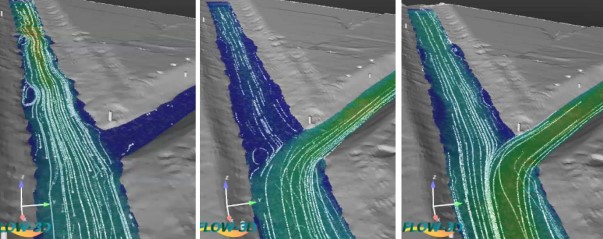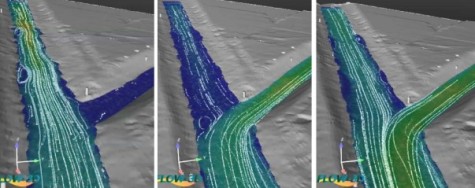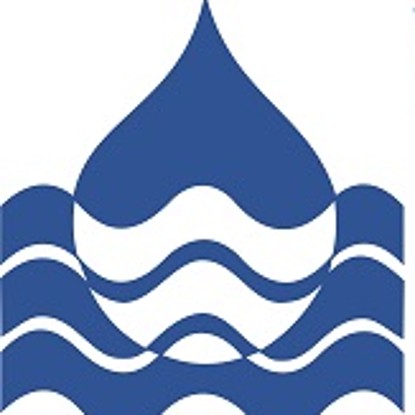Short description
In order to seek out habitats of different function and suitability in flowing water systems, fish carry out more or less extensive changes of location during the course of the year. In doing so, they orient themselves to the main flow, which they follow as a preferred migration corridor, especially during upstream migration. At diversion power plants, the discharge of the watercourse is divided between the powerhouse and the mother bed: While the largest partial flow enters the turbine via the headrace channel and flows back into the watercourse via the tailrace channel, the parallel mother bed receives the more or less small residual flow. According to current knowledge, fish always migrate upstream against the main current, so that most of them swim into the underwater channel of diversion power plants. There, the powerhouse with turbine blocks their further way upstream, which is why, according to the state of the art, the construction of a fish ladder is indispensable at this position. If possible, this priority fish ladder should be supplemented by a second one at the diversion weir.
Due to the development situation in the vicinity of diversion power plants, the subsequent construction of a fish ladder near the powerhouse in particular is often associated with a high technical and financial outlay. In such cases, German regulations recommend the installation of a mechanical float-in barrier to physically prevent fish from migrating into the downstream channel, so that they can only continue their migration via the parent bed to a fish ladder at the diversion weir. Such fish passage barriers are more or less fragmentary bars made of stones at the confluence of the tailwater channel with the parent bed. The fish ecological function of such barriers has not yet been proven due to a lack of suitable investigation methods.
Against this background, the Arnsberg district government commissioned the Institut für angewandte Ökologie GmbH in consortium with the Chair of Hydraulic Engineering of the Technical University of Darmstadt to conduct a study on the expected effectiveness of a planned swimming barrier at a power plant site near Marsberg on the Diemel River. For this purpose, the fish swimming paths at the site were telemetrically recorded under different operating and discharge conditions and the associated flow signatures were calculated using a numerical model calibrated by means of natural measurement data. This was accompanied by a nationwide inventory of such floating barriers and a typification of researched plant designs as well as an evaluation of the functionality of selected representative designs based on collected hydraulic and geometric data.









